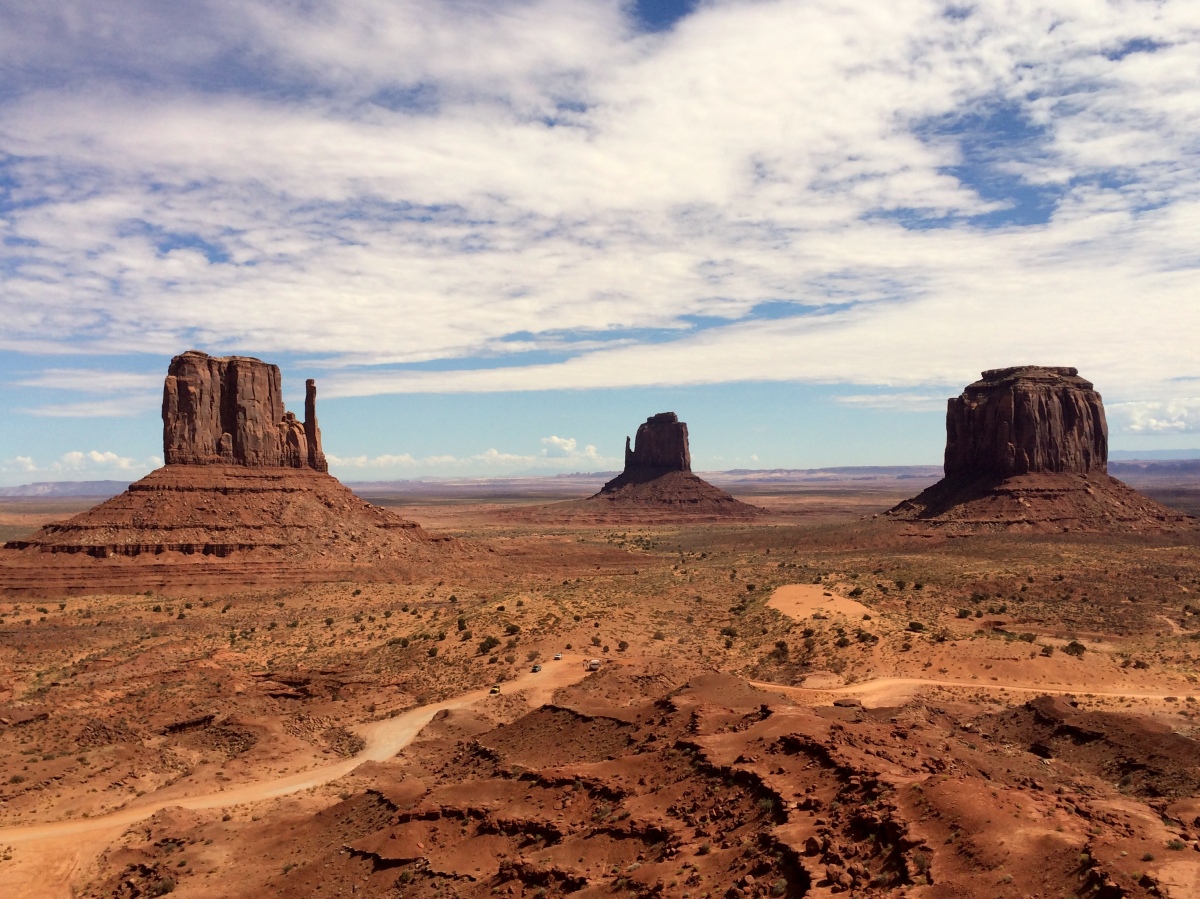This area, popularly known as the Monument Valley, is actually a Navajo Tribal Park. It is on the border of Utah and Arizona. It is part of the Navajo Nation – a semi-autonomous Native American territory spanning over parts of Utah, Arizona, and New Mexico. This is the largest Native American Reservation. This semi-autonomous nation was created in 1868 after much negotiation with the American government. It has its own government, constitution, judiciary system, president, and police force. There are many such Native American reservations in these states. It spans around 30,000 square miles.
Nature has created these sculptures in this land inhabited by the Navajo people. Similar to Bryce Canyon, we find towers shaped by forces of nature. Unlike in Bryce, however, these are formed on flat land rather than in the canyon. They range from 400 to 1000 ft in height. There are several types of sculptures. Mesas are a boulder that appears like a “Table” land. It is the first stage of erosion. The most popular are the Rain God and Sentinel mesas. The next stage of erosion is the formation of a Butte. The popular buttes are the Elephant, the Camel and the Castle. These names are given according to their shapes. The third stage of erosion is when the Butte forming Spires. They look like poles. The popular spires are the Totem Pole and the Three Sisters.
The Anasazi people had built their stone houses with support of mesas. These are still preserved in some places. The Navajo people who came later built free-standing earthen houses. These are called Hogans. Replicas of these are on the view near the visitor center. There are two types of Hogans. The triangular ones are called male Hogans and the round are called female Hogans. The male Hogans are for temporary use whereas the female Hogans are for permanent stay. The Navajo people now live in modern homes, however, Hogans are still used for special ceremonies.
There is a 27 km long unpaved road through the Monument Valley for visiting various viewpoints. You can either take your own car or travel with the guided Navajo tours in the open jeeps. While driving down to the Monument Valley, we missed some part of it due to nightfall. So we decided to retrace our way 40 to 50 kilometers inside. On this road you can see many sculptures such as the Eagle rock, King and his Throne, Sitting Hen, Sleeping Bear, Castle Butte, and Stage Coach.

Monument Valley was made popular by the Hollywood movies. Movie-making in this valley started in 1930. Near the visitor center there is a museum of the famous director John Ford. Actor John Wayne starred in a movie called Stagecoach that was released in 1939. After that another John Wayne movie – The Searchers – was shot here followed by Clint Eastwood’s The Eiger Sanction. The valley has been continuously used to this day in movies such as National Lampoon’s Vacation (1983), Back to the Future – part 3 (1990), Thelma and Louise (1991), Pontiac Moon (1994), Mission Impossible 2 (2000), and Vertical Limit (2000). Not only that but the opening song of a Telugu film called Takkari Donga was filmed here in 2002. The most recent movie that was shot here is The Lone Ranger.






